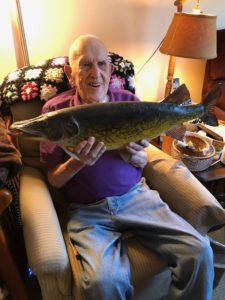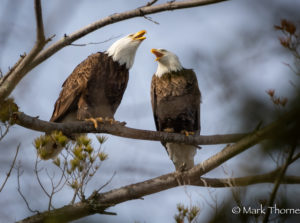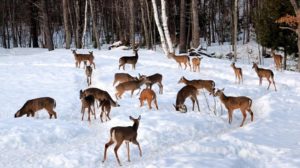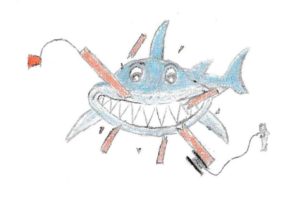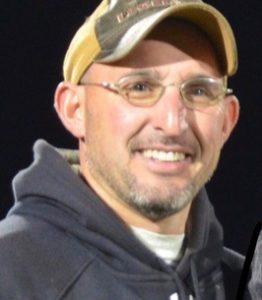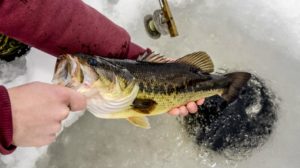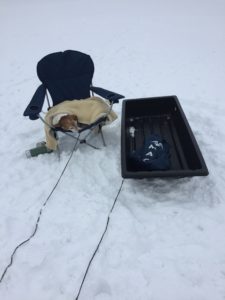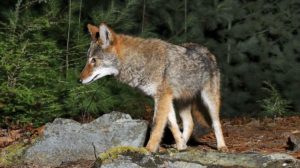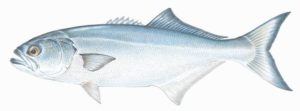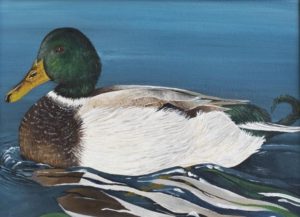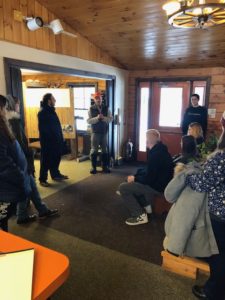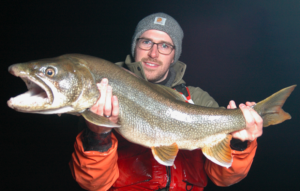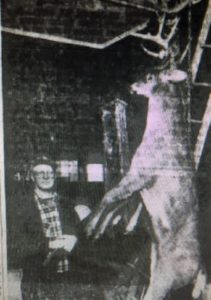Preliminary deer harvest report shows a near state record year in 2019, but not in the Western District
The preliminary statewide deer harvest for 2019 is 13,922 – the second highest harvest on record, 628 fewer than the 2018 record. However; Wildlife Management Zones (WMZ) 1 through 4, (which includes the Berkshires) recorded a harvest drop of 412 deer. That amounts to a 16% drop from 2018 to 2019.
MassWildlife believes the deep snow that covered much of the state during the shotgun season appears to have caused a drop in hunter effort and deer harvest during that time (especially on the opening day). However, it appears deer taken during the archery season and primitive season made up for that short-term drop. Well, the archery and primitive seasons did not make up the difference here in the Berkshires.
The preliminary statewide harvest figures by season are as follows:
• Youth Deer Hunt Day (Sept. 28): 89 deer
• Paraplegic Deer Hunt (Oct. 31– Nov. 2): 5 deer
• Archery Season (Zones 1-9: Oct. 21–Nov. 30 and Zones 10-14: Oct 7-Nov. 30): 6,149 deer
• Shotgun Season (Dec. 2–Dec. 14): 4,984 deer
• Primitive Firearms Season (Dec. 16–Dec. 31): 2,694 deer
Total statewide harvest beginning in 2014 and ending with 2019 were as follows: 11,165, 10,142, 12,233, 13,255, 14,513 and this year’s 13,922. The Western District WMZ 1 through WMZ 4 had the following harvests beginning in 2014: 1,737, 1,887, 2,197, 2,318, 2,618 and this year’s 2,206.
MassWildlife feels that while total harvest by zone can be informative, it doesn’t provide the complete picture. Thus, it is important to assess harvest data and monitor trends by Wildlife Management Zone. Total harvest is influenced by deer density and the number of antlerless deer permits that MassWildlife allocates in each zone, as well as annual changes in hunter effort, harvest-rates, success-rates, weather, etc.
The MassWildlife Deer Project Leader will spend the next few months thoroughly analyzing the deer harvest and biological data as well as assessing deer population trends in each zone. The results and recommendations for the 2020 season will take place at the annual deer management review presented at a Fisheries and Wildlife Board meeting in late spring. A complete harvest summary will be posted on the MassWildlife website shortly after the deer review, so check their web site in early summer.
The recap of the 2019 deer harvest is as follows:
Preliminary deer harvest report shows a near state record year in 2019, but not in the Western District
The preliminary statewide deer harvest for 2019 is 13,922 – the second highest harvest on record, 628 fewer than the 2018 record. However; Wildlife Management Zones (WMZ) 1 through 4, (which includes the Berkshires) recorded a harvest drop of 412 deer. That amounts to a 16% drop from 2018 to 2019.
MassWildlife believes the deep snow that covered much of the state during the shotgun season appears to have caused a drop in hunter effort and deer harvest during that time (especially on the opening day). However, it appears deer taken during the archery season and primitive season made up for that short-term drop. Well, the archery and primitive seasons did not make up the difference here in the Berkshires.
The preliminary statewide harvest figures by season are as follows:
• Youth Deer Hunt Day (Sept. 28): 89 deer
• Paraplegic Deer Hunt (Oct. 31– Nov. 2): 5 deer
• Archery Season (Zones 1-9: Oct. 21–Nov. 30 and Zones 10-14: Oct 7-Nov. 30): 6,149 deer
• Shotgun Season (Dec. 2–Dec. 14): 4,984 deer
• Primitive Firearms Season (Dec. 16–Dec. 31): 2,694 deer
Total statewide harvest beginning in 2014 and ending with 2019 were as follows: 11,165, 10,142, 12,233, 13,255, 14,513 and this year’s 13,922. The Western District WMZ 1 through WMZ 4 had the following harvests beginning in 2014: 1,737, 1,887, 2,197, 2,318, 2,618 and this year’s 2,206.
MassWildlife feels that while total harvest by zone can be informative, it doesn’t provide the complete picture. Thus, it is important to assess harvest data and monitor trends by Wildlife Management Zone. Total harvest is influenced by deer density and the number of antlerless deer permits that MassWildlife allocates in each zone, as well as annual changes in hunter effort, harvest-rates, success-rates, weather, etc.
The MassWildlife Deer Project Leader will spend the next few months thoroughly analyzing the deer harvest and biological data as well as assessing deer population trends in each zone. The results and recommendations for the 2020 season will take place at the annual deer management review presented at a Fisheries and Wildlife Board meeting in late spring. A complete harvest summary will be posted on the MassWildlife website shortly after the deer review, so check their web site in early summer.
Tavares lands big brown trout while jigging for smelt
On Tuesday, January 21, Ben Tavares of West Lebanon, NY was ice fishing by himself on Onota Lake in Pittsfield. He was jigging for smelt using a HALI Jig (a little spoon with a micro sized hook) and 4 lbs. test line. He had picked up two smelt and was getting ready to leave. 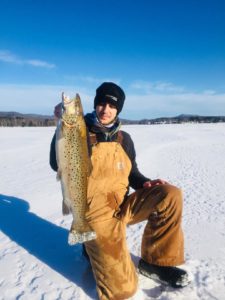
When he went back into his shanty and took one last look at his electronic fish marker, he detected fish and started jigging again.
Pretty soon he had such a hard hit that the tip of the little jigging rod bent right down to the water in the hole. “This is not a smelt”, he thought to himself. Although he fought it for 10-15 minutes, it felt like a half hour. He finally got it to the hole but the fish spooked again and made another “crazy” run.
While working it up to the hole again, he worried because the line tangled around the fish’s tail. Luckily it came up to the hole head first and Ben grabbed it by the gills. He called his buddy Brandon Tynan of New Lebanon and he arrived to measure and photo it.
He and Brandon brought it to the Onota Boat Livery to officially weigh and photo it. It weighed 7 lbs. 10 oz, was 28 inches long and had a girth of 15 inches. A picture of it is now hanging at the Onota Boat Livery. Ben is sending the paperwork to register it with MassWildlife He will surely receive a bronze pin from MassWildlife, for to be awarded a “catch and keep” pin, the fish must be at least 4 lbs.
Ben intends to have the fish mounted by Bouker’s Taxidermy of White Creek, NY.
On a personal note, I have been pondering why such a large trout would hit such a tiny fishing lure. The only thing that makes sense to me is that perhaps the smelt was nibbling on Ben’s lure and the big trout came along and took the smelt, and accidentally hooking himself on the micro hook. Wow! What are the chances of landing that large fish on such a tiny hook.
Mighty fine job Ben!
It is only a matter of time!”
“There is no question about it. Cougars are not only being seen in eastern North America, some are attempting to recolonize their former habitats. Where once it was flatly dismissed as an impossibility in the so-called “developed” east, scientists have now documented cougar dispersals and even occupancy in a growing list of eastern states and provinces”. That’s according to Sue Morse, considered by many as one of the most capable and experienced naturalists in the United States.
You are encouraged to join the Berkshire Environmental Action Team (BEAT) on February 15 from 6:30 to 8:00 pm at the Boland Theater, Berkshire Community College, 1350 West St. Pittsfield. There you will see a magnificently illustrated introduction to cougar biology and ecology in the broad diversity of habitats where Sue has studied them, from Alberta to the Arizona/Mexico border. Get the low-down regarding the latest confirmations of cougars in the east, including the recently documented suitability of a substantial amount of wild habitats from Manitoba to Louisiana and Maine to Georgia.
Sue, the founder and science director of Keeping Track, is highly regarded as an expert in natural history and one of North America’s top wildlife trackers. Since 1977, she has been monitoring wildlife, with an emphasis on documenting the presence and habitat requirements of bobcat, black bear, Canada lynx and cougar.
When not in the field conducting research, leading training programs or photographing wildlife, Sue can often be found presenting her findings and award-winning images to a wide range of audiences, including the general public, conservation leaders and students of all ages. Over the years, the University of Vermont graduate has served as mentor to numerous young people and inspired many to pursue careers in natural resources.
A $15 Freewill donation is suggested, students get in free. For more details, call (413) 230-7321 or email: team@thebeatnews.org
Ice Fishing Derbies
The Onota Fishing Club plans to have an ice fishing derby on Onota Lake on Sunday, February 16 beginning at 6:00 am with all fish being weighed in by 1:00 pm. Registration will be at the Controy Pavilion. Admission is $15 for adults and children under 12 who are accompanied by an adult free. Juniors under the age of fishing licenses $5. There will be raffles, prizes for juniors and senior divisions. Hamburgers and hotdogs along with hot chocolate and other beverages will be available at the pavilion.
The Cheshire Rod & Gun Club and Adams Outdoor for Youth plan to have an ice fishing derby on the 1st and 2nd Hoosac Lakes also on February 16 from sunrise until 4:00 pm. Weigh-in at Farnams Causeway, Channel 7. Heaviest ticket holdersfish wins an 8” K-Drill combo including drill and battery ($500 value). Youth prizes for 1st, 2nd and 3rd place. Ptizes and refreshments – 5:00 pm at the CR&G Club House. Kids 14 and under free with adult ticket. $10.00 donation. Only cancellation will be lack of ice. If derby is cancelled an augur will be raffled of to ticket holders.

